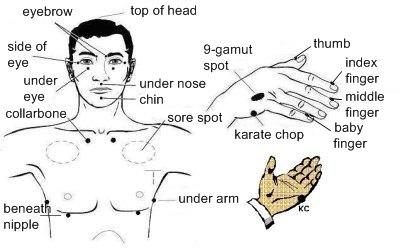by Anna Hunt
Billions of beneficial bacteria, commonly referred to as probiotics, live in the human body. These bacteria are part of what keeps the body in balance in order to maintain overall good health. They reside in the human digestive system, specifically the intestinal tract also referred to as the gut, (as well as in the mouth, on the skin, in the colon, etc), and are integral to gastrointestinal
Common Types of Probiotics
The best known of the probiotics are the Lactobacilli. There are a number of Lactobacilli species that are especially effective in creating an overall balance of the various microorganisms in the gut:
- Lactobacillus delbrueckii subsp. bulgaricus is found in naturally fermented foods and is also used by the dairy industry to produce yogurt.
- Lactobacillus acidophilus is naturally-occurring in the human gastrointestinal tract. Certain strains are often included in probiotic supplements because they are believed to be able to survive gastrointestinal transit, being resistant to bile, low pH, and digestive enzymes.
- Other common Lactobacilli species include brevis, casei and sporogenes.
Other common probiotics include:
- Bifidobacteria, which are one of the major genera of probiotics found in the gastrointestinal tract of mammals, including humans. Various species are often used in the food industry.
- Streptococci, which are often known for being the main culprit of strep throat and pink eye, although there are many non-pathogenic species that are part of the human microbiome. Streptococci are used in the production of Swiss cheese, reduced-fat cheese and yogurt.
- Bacilli, which are found in soils and in certain fermented foods, as for example kimchi. Certain species of Bacilli, such as Bacillus pumilus, are capable of degrading bisphenol A, commonly known as BPA, which pollutes human bodies due to plastics overuse.
The best known of the probiotics are the Lactobacilli. There are a number of Lactobacilli species that are especially effective in creating an overall balance of the various microorganisms in the gut:
- Lactobacillus delbrueckii subsp. bulgaricus is found in naturally fermented foods and is also used by the dairy industry to produce yogurt.
- Lactobacillus acidophilus is naturally-occurring in the human gastrointestinal tract. Certain strains are often included in probiotic supplements because they are believed to be able to survive gastrointestinal transit, being resistant to bile, low pH, and digestive enzymes.
- Other common Lactobacilli species include brevis, casei and sporogenes.
Other common probiotics include:
- Bifidobacteria, which are one of the major genera of probiotics found in the gastrointestinal tract of mammals, including humans. Various species are often used in the food industry.
- Streptococci, which are often known for being the main culprit of strep throat and pink eye, although there are many non-pathogenic species that are part of the human microbiome. Streptococci are used in the production of Swiss cheese, reduced-fat cheese and yogurt.
- Bacilli, which are found in soils and in certain fermented foods, as for example kimchi. Certain species of Bacilli, such as Bacillus pumilus, are capable of degrading bisphenol A, commonly known as BPA, which pollutes human bodies due to plastics overuse.
Why are Probiotics Important?
Just as billions of beneficial bacteria can live in the body, the gut is also filled with harmful bacteria. The body needs probiotics to counteract these harmful bacteria in order to enable the production of vitamins and enzymes essential for healthy body function and prevent build-up of carcinogenic toxins.
Artificial food additives, GMOs in our foods, chlorinated and fluoridated water, and use of antibiotics are all detrimental to healthy gut flora. Considering that many people follow a Western diet high in processed foods, starches and meats, it is easy for their gut to become unbalanced. Scientists believe that lack of balance of good and bad bacteria can lead to cancer, hypertension and many other types of diseases. Furthermore, our bodies are increasingly subjugated to chemicals from pesticides, herbicides and industrialized products such as plastics (containing BPA and BPS). Certain probiotics are able to handle these toxins better than our own detoxification processes.
To read more about why probiotics are important, read: Are Probiotics the New Prozac?
Natural Sources of Probiotics Probiotics are readily available to you in a variety of natural foods, including the following: Kombucha is an all natural fermented drink that is made of sweetened black tea. It is made using SCOBY – a symbiotic colony of bacteria and yeast. Kombucha beverages are full of probiotics and other healthy amino acids. You can purchase kombucha drinks, kombucha SCOBY or a kombucha tea starter kit from various manufacturers. If you plan to make your own kombucha tea, consider that it needs to be fermented to a specific pH of 2.5 to 3.0, or it will not develop the beneficial nutrients or may overburden the stomach. Additionally, Kombuchakamp.com is a great resource for all things kombucha.
Yogurt is made by bacterial fermentation of milk. Yogurt can be made from cow milk, goat milk, soy milk, nut milks such as almond milk, and coconut milk. Most commercial dairy yogurts are made withLactobacillus delbrueckii subsp. bulgaricus and Streptococcus thermophilus bacteria, and at times other lactobacilli and bifidobacteria are added. To offset the sourness of yogurt, large amounts of sugar and artificial sweeteners are often added to commercial yogurts, therefore look for unsweetened natural yogurt or learn to make your own. Kefir is a liquid yogurt-like fermented product, often made out of cow or goat milk. It is high in both Lactobacilli and Bifidobacteria probiotics. Kefir is made with kefir grains – also called kefir babies – which are a combination of bacteria and yeasts.
Kefir grains will also ferment milk substitutes such as soy milk, rice milk, and coconut milk, as well as other sugary liquids including fruit juice, coconut water, beer wort and ginger beer. You can usually find kefir drinks at your local health food store or buy kefir grains to produce your own kefir drinks. Kefir grains reproduce easily and can be shared with friends.
Kimchi is a fermented cabbage dish that originated in Korea and comes in many different varieties but usually contains vegetables such as napa cabbage, cucumbers, radishes and scallions. Kimchi contains many strains of probiotics including Lactobacillus kimchii, Lactobacillus brevis, and Bacillus pumilus. These bacteria are known to help the body eliminate BPA and pesticides. A variety of Kimchi products can be purchased in stores, or you can learn how to make kimchi at home.
Apple cider vinegar is a vinegar made from cider or apple must, with yeast and bacteria added to the liquid to facilitate the fermentation process. In addition to providing probiotics, apple cider vinegar has many internal and external health benefits, many of which are listed here. When purchasing apple cider vinegar, consider only organic raw products.
This list is by no means complete – with soy bean-based foods such as miso and natto also full of probiotics. In addition to these specific foods, healthy soil is a great source of probiotics, and hence a diet high in raw fruits and vegetables grown in organic soil will provide the body with lots of healthy bacteria. Reducing processed foods and ingesting more raw, organic produce will benefit your waistline in more than one way!
Resource Books:
How to Make Probiotic Drinks for a Raw Food Diet: Kefir, Kombucha, Ginger Beer, and Naturally Fermented Ciders, Sodas, and Smoothies by R.J. Ruppenthal
Delicious Probiotic Drinks: 75 Recipes for Kombucha, Kefir, Ginger Beer, and Other Naturally Fermented Drinks by Julia Mueller
Fermented Foods for Health: Use the Power of Probiotic Foods to Improve Your Digestion, Strengthen Your Immunity, and Prevent Illness by Deirdre Rawlings
Mastering Fermentation: Recipes for Making and Cooking with Fermented Foods by Mary Karlin
Probiotic Supplements
There are various different types of probiotic supplements that you could buy at health food stores. Look for the following when buying a probiotic supplement:
- At least 10 probiotic strains
- High culture count with both Lactobacilli (Lacto) and Bifidobacteria (Bifido) strains. Some supplements refer to these as L’s and B’s.
- Capsules and/or probiotic strains that allow the supplement to resist stomach acid so the probiotics are released into the intestinal tract.
- Upwards of 15 Billion live cultures per capsule. Consult your physician or holistic practitioner on what live cultures count is right for you if you are trying to address a specific physical issue or illness, or need to supplement the use of antibiotics or other prescription drugs.
- Potency until time of consumption, especially if you need to travel with your probiotics and cannot refrigerate them.
- No dairy, sugar, gluten, soy, corn, casein, yeast, artificial colors, flavors, preservatives or any genetically modified or engineered ingredients.
- ReNew Life Ultimate Flora Critical Care 50 Billion, Vegetable Capsules
- Renew Life Ultimate Flora RTS Daily Capsules, 30 Count
- Garden of Life Primal Defense Ultra Ultimate Probiotics Formula
http://www.greenmedinfo.com/blog/8-surprisingly-simple-ways-detoxify
http://www.greenmedinfo.com/blog/amazing-healing-properties-fermented-foods
http://www.wakingtimes.com/2013/08/16/10-signs-you-have-candida-overgrowth-and-what-to-do-about-it/
http://www.wakingtimes.com/2013/07/25/are-probiotics-the-new-prozac/
http://www.wakingtimes.com/2013/06/05/gut-biota-never-recover-from-antibiotics-damages-future-generations/
http://www.wakingtimes.com/2013/05/06/the-dangers-of-fluoride-based-antibiotics-plus-natural-solutions/
http://en.wikipedia.org/wiki/Yogurt
http://en.wikipedia.org/wiki/Lactobacillus_delbrueckii_subsp._bulgaricus
http://en.wikipedia.org/wiki/Streptococcus
http://en.wikipedia.org/wiki/Bifidobacteria
http://www.wakingtimes.com/2012/11/01/kombucha-tea-a-panacea-for-many-ills/
http://www.happyherbalist.com/cautions.htm
Anna Hunt is a staff writer for WakingTimes.com and an entrepreneur with over a decade of experience in research and editorial writing. She and her husband run a preparedness e-store outlet at www.offgridoutpost.com, offering GMO-free storable food and emergency kits. Anna is also a certified Hatha yoga instructor at Atenas Yoga. She enjoys raising her children and being a voice for optimal human health and wellness. Read more of her excellent articles here.
SOURE








